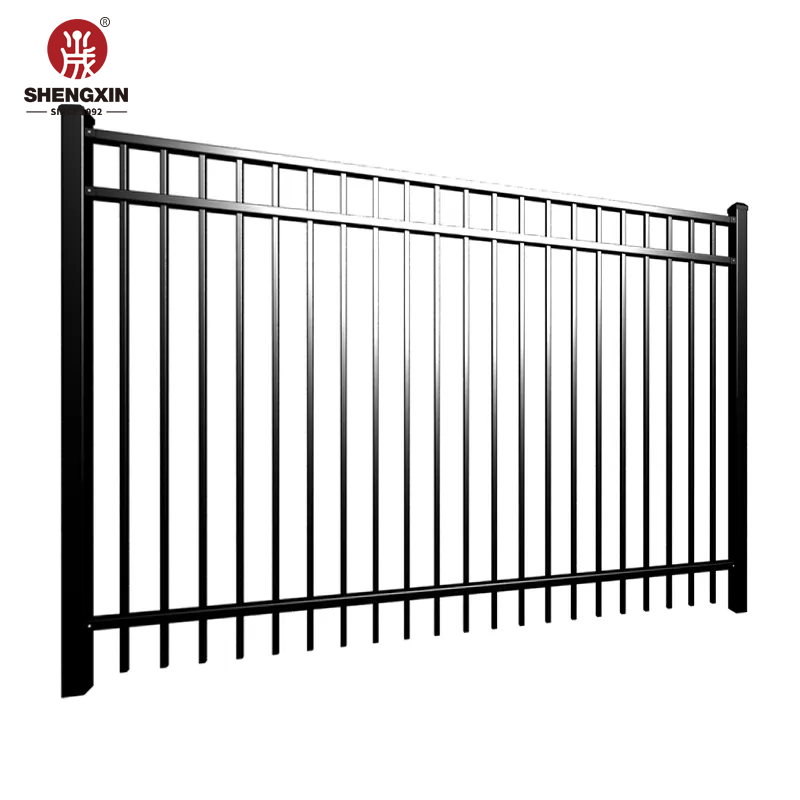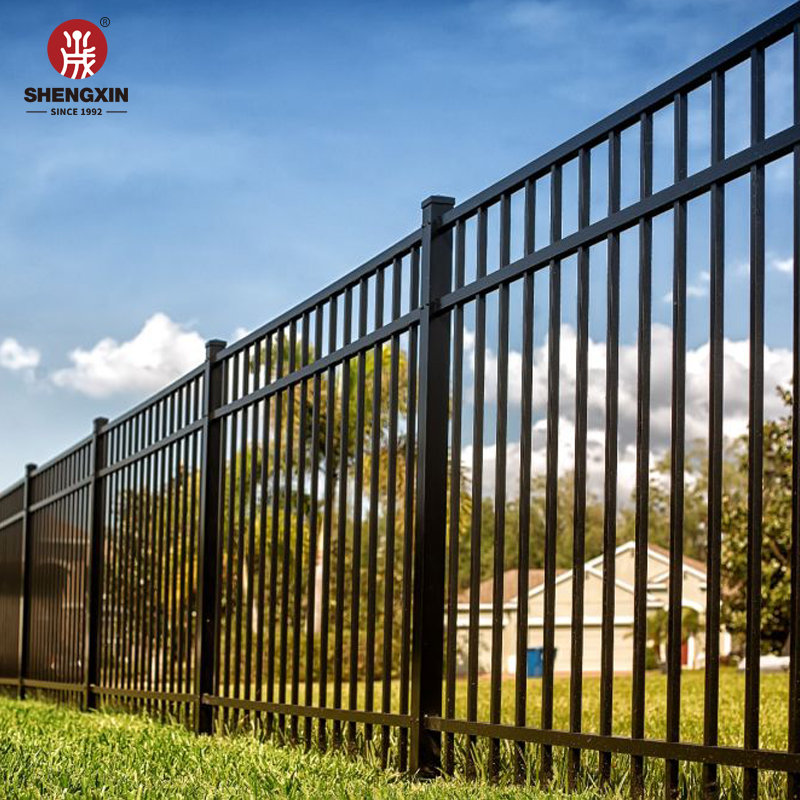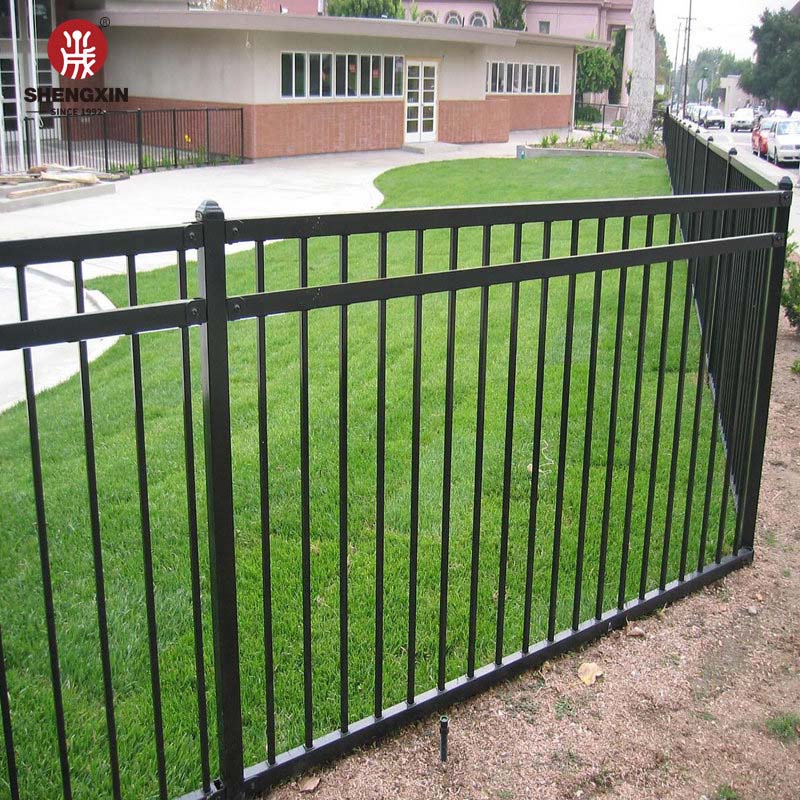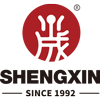
Օգս . 23, 2025 01:40 Back to list
Premium Galvanized Steel Fence Designs - Durable & Secure Panels
Introduction to Galvanized Steel Fence Designs
In modern industrial and commercial infrastructure, the demand for robust, durable, and low-maintenance perimeter security solutions is paramount. This comprehensive article delves into the intricacies of galvanized steel fence designs, offering a detailed analysis for B2B decision-makers, engineers, and procurement specialists. Galvanization, a process of applying a protective zinc coating to steel, significantly enhances the material's resistance to corrosion, extending its service life and reducing lifecycle costs. We will explore the manufacturing excellence, technical specifications, diverse application scenarios, and key advantages that position galvanized steel fences as an indispensable asset in various demanding environments.
Manufacturing Process Flow for Galvanized Steel Fences
The production of high-quality galvanized steel fence designs involves a meticulous multi-stage process, ensuring optimal structural integrity and unparalleled corrosion resistance. The primary material used is high-grade carbon steel, typically conforming to ASTM A36 or equivalent international standards, selected for its strength and weldability. Below is a detailed breakdown of the manufacturing process:
1. Raw Material Inspection & Preparation
Incoming steel bars, tubes, or sheets undergo rigorous inspection for material composition, dimensions, and surface defects, ensuring adherence to specifications. This often involves spectrographic analysis and ultrasonic testing to verify internal soundness.
2. Cutting and Forming
Precision cutting operations, often utilizing CNC plasma or laser cutting, are employed to achieve accurate panel and post dimensions. Bending and forming processes, such as hydraulic press braking, shape components like infill panels, posts, and rails according to specific fence designs. For intricate components, forging or specialized machining may be employed to ensure exact tolerances.
3. Welding and Assembly
Individual components are assembled and welded using advanced MIG/MAG or Robotic Welding techniques. This ensures strong, consistent joints free from porosity and defects. Weld quality is critical and is often verified through non-destructive testing (NDT) methods like dye penetrant inspection or magnetic particle testing to meet standards such as AWS D1.1.
4. Surface Preparation (Pre-galvanization)
This is a crucial stage for effective galvanization. It typically involves:
- Degreasing: Removal of oils, grease, and dirt using alkaline solutions.
- Pickling: Immersion in acidic baths (hydrochloric or sulfuric acid) to remove rust and mill scale. This step is critical for a clean, reactive steel surface.
- Rinsing: Thorough rinsing to remove residual acids and cleaning agents.
- Fluxing: Application of a zinc ammonium chloride solution, which cleans the surface further and prevents oxidation prior to galvanizing, promoting excellent adhesion of the molten zinc.
5. Hot-Dip Galvanization
The prepared steel fence components are submerged into a molten zinc bath maintained at approximately 450°C (840°F). During this process, a metallurgical bond forms between the steel and the zinc, creating a multi-layered coating of zinc-iron alloy layers topped by a pure zinc layer. This coating provides both barrier and cathodic protection against corrosion. The thickness of the zinc coating typically adheres to ISO 1461 or ASTM A123 standards, ensuring a service life often exceeding 50 years in many environments.
6. Cooling and Post-Treatment
After galvanization, parts are withdrawn and allowed to cool, either by air or by quenching in water or a passivation solution. Post-treatment may include inspection, de-drossing (removal of excess zinc), and if specified, powder coating for enhanced aesthetics and additional corrosion protection (duplex system).
7. Quality Control and Testing
Every batch of galvanized steel fence panels undergoes stringent quality control. Key tests include:
- Coating Thickness Measurement: Using magnetic induction or eddy current gauges (e.g., Elcometer 456) to verify zinc thickness according to ISO 2178.
- Adhesion Test: Hammer or knife test to ensure proper bond between zinc and steel.
- Visual Inspection: Checking for completeness of coating, smoothness, and absence of defects.
- Dimensional Accuracy: Ensuring components meet design specifications.
Target industries benefiting from this robust manufacturing process include petrochemical plants, metallurgical facilities, water supply & drainage infrastructure, power generation, and transportation sectors. The inherent corrosion resistance and energy-saving aspects (due to reduced maintenance) are key advantages in these demanding environments.

Industry Trends and Technical Specifications
The market for perimeter security solutions is continuously evolving, driven by demands for enhanced security, sustainability, and aesthetic integration. Current industry trends in galvanized steel fence designs focus on modular systems, increased integration with surveillance technologies, and a growing preference for duplex coating systems (galvanization followed by powder coating) for superior protection and color customization. There's also a significant push towards specifying products with verifiable environmental product declarations (EPDs) reflecting responsible manufacturing practices.
Key Technical Parameters for Galvanized Steel Fence Panels
When evaluating galvanized steel fence panels, several critical technical parameters must be considered to ensure suitability for specific project requirements. These parameters dictate the fence's strength, durability, and long-term performance.
| Parameter | Typical Specification | Standard / Test Method |
|---|---|---|
| Material Grade | Q235/Q345 Carbon Steel (Equivalent to ASTM A36/A500 Grade B) | ASTM A36/A500, EN 10025 |
| Zinc Coating Thickness (Hot-Dip) | ≥ 85 µm (for sections ≥ 6mm thick) ≥ 55 µm (for sections < 1.5mm thick) |
ISO 1461, ASTM A123 |
| Tensile Strength | 340-470 MPa (for Q235) | ASTM A370, ISO 6892-1 |
| Yield Strength | ≥ 235 MPa (for Q235) | ASTM A370, ISO 6892-1 |
| Panel Height Range | 1.2m to 2.4m (customizable) | Client Specification |
| Post Dimensions | 60x60mm, 80x80mm, 100x100mm (square/rectangular hollow sections) | Client Specification, EN 10219 |
| Corrosion Resistance (Salt Spray) | ≥ 1000 hours without red rust (for duplex system) | ASTM B117, ISO 9227 |
These technical data points are crucial for engineers to specify the correct steel fence panel galvanized for their specific site conditions, considering environmental factors, security threats, and expected service life.
Application Scenarios
The versatility and resilience of galvanized steel fences make them ideal for a wide array of demanding industrial and commercial applications. Their inherent strength provides robust security, while the galvanized coating ensures longevity in harsh environmental conditions. Some prominent application scenarios include:
- Petrochemical Facilities: Protecting critical infrastructure, storage tanks, and processing units from unauthorized access and potential sabotage, where resistance to chemical fumes and corrosive atmospheres is essential.
- Power Plants and Substations: Securing high-voltage areas, transformer yards, and control rooms. The non-conductive nature of the coating (when intact) and structural stability are key.
- Water Treatment Plants & Pumping Stations: Enclosing sensitive water infrastructure, ensuring public safety and preventing contamination. Excellent corrosion resistance is vital due to constant exposure to moisture and chemicals.
- Transportation Hubs (Airports, Ports, Rail Yards): Defining secure perimeters, controlling access to restricted areas, and protecting valuable assets and cargo. The durability ensures minimal disruption for maintenance.
- Industrial Parks and Manufacturing Plants: Securing entire industrial complexes, separating different operational zones, and deterring theft and vandalism.
- Data Centers and Telecommunication Towers: Providing high-level physical security for critical digital infrastructure, where reliability and resistance to environmental degradation are paramount.
- Mining and Metallurgy Operations: Marking boundaries, securing equipment storage, and providing safety barriers in rugged, often corrosive, environments.
In these scenarios, the long-term performance of galvanized steel fence panels translates directly into reduced operational costs and enhanced security posture, making them a strategic investment.

Technical Advantages of Galvanized Steel Fence Designs
The adoption of galvanized steel fence designs provides a multitude of technical and economic advantages over conventional fencing materials. These benefits are critical for projects requiring minimal maintenance and maximum operational reliability.
- Superior Corrosion Resistance: The hot-dip galvanization process creates a metallurgically bonded zinc coating that acts as a robust barrier against environmental corrosion. This cathodic protection self-heals small areas of damage, preventing rust creep and ensuring the fence's integrity for decades, even in coastal or industrial atmospheres. Data from the American Galvanizers Association (AGA) indicates that hot-dip galvanized steel can last 50+ years in rural environments and 20-25 years in severe marine or industrial exposures.
- Extended Service Life & Durability: With an average service life significantly longer than painted or ungalvanized steel, galvanized fences offer exceptional longevity. This reduces the frequency of replacement and associated labor costs, translating into a lower total cost of ownership (TCO). The robust steel substrate combined with the tough zinc coating withstands physical impact and harsh weather conditions effectively.
- Minimal Maintenance Requirements: Unlike painted fences that require periodic scraping and recoating, galvanized fences need virtually no maintenance for decades. This characteristic is particularly advantageous in remote locations or large-scale installations where maintenance access is difficult or costly.
- Cost-Effectiveness: While the initial investment might be slightly higher than some alternatives, the long-term savings from reduced maintenance and extended lifespan make galvanized steel fences a highly cost-effective solution. Lifecycle cost analysis consistently favors galvanized options.
- Sustainability: Steel is 100% recyclable, and zinc is also a natural, abundant element. Hot-dip galvanizing is an environmentally friendly process, and the extended lifespan of the product minimizes resource consumption over time. Many suppliers can provide Environmental Product Declarations (EPDs) conforming to ISO 14025.
- Aesthetic Versatility: While primarily functional, galvanized steel fences can be designed with various infill patterns (e.g., vertical pickets, woven mesh, perforated panels) and can be further enhanced with powder coating for aesthetic appeal, creating a "duplex" system that combines superior protection with design flexibility.
Vendor Comparison: Evaluating Galvanized Steel Fence Suppliers
Selecting the right vendor for your steel fence panel galvanized project is crucial for ensuring product quality, timely delivery, and comprehensive support. A thorough comparison should extend beyond mere pricing to encompass material quality, adherence to standards, customization capabilities, and after-sales service. Here’s a comparative matrix highlighting key differentiators:
| Feature | Vendor A (Premium) | Vendor B (Mid-Range) | Vendor C (Budget) |
|---|---|---|---|
| Zinc Coating Adherence | ISO 1461 Class A2, Min. 85µm | ISO 1461 Class A1, Min. 70µm | ASTM A123, Min. 45µm |
| Material Certifications | ISO 9001, CE, ASTM, EN Standards | ISO 9001, Local Standards | Basic Factory QC |
| Customization Capability | Full design, engineering, and duplex coating options | Modular adjustments, standard powder coat colors | Limited, standard sizes only |
| Lead Time (Avg. project) | 4-6 weeks | 6-8 weeks | 8-10 weeks (or longer) |
| Warranty | 25+ years anti-corrosion, 10 years structural | 10-15 years anti-corrosion, 5 years structural | 5 years anti-corrosion, 1 year structural |
| Technical Support | Dedicated project manager, engineering consultation | Standard customer service, installation guides | Limited email support |
It is highly recommended to perform a comprehensive due diligence, including factory audits and reference checks, especially for large-scale or critical infrastructure projects.
Customized Solutions
While standard galvanized steel fence designs offer excellent baseline performance, many B2B projects necessitate bespoke solutions to address unique site constraints, security demands, and aesthetic considerations. Reputable manufacturers offer extensive customization options, collaborating closely with clients from conceptual design to final installation.
Areas of Customization:
- Height and Width: Adjustments to accommodate varying security levels and terrain.
- Infill Panel Designs: From basic vertical pickets to intricate perforated patterns or mesh infills, offering specific anti-climb properties or architectural aesthetics.
- Post Types & Spacing: Selection of post dimensions (square, rectangular, circular) and spacing to meet wind load requirements and specific security needs, including anti-ram features.
- Access Control Integration: Seamless integration of gates (swing, slide, cantilever), turnstiles, and sophisticated access control systems (RFID, biometric readers, intercoms).
- Security Enhancements: Addition of deterrents like razor wire, barbed wire, anti-climb spikes, or provisions for electric fencing.
- Duplex Coatings: Application of a high-performance powder coat over the hot-dip galvanized layer, providing a wider color palette (RAL colors) and an additional layer of corrosion protection.
- Foundation Solutions: Customized anchoring systems for different soil conditions, including deep concrete foundations or specialized bolt-down plates.
By offering tailored solutions, manufacturers ensure that the galvanized steel fence system is not merely a perimeter barrier but an integral, optimized component of the overall site security and operational strategy.
Application Case Studies
Real-world implementations underscore the practical benefits and reliability of high-quality galvanized steel fencing. Here are two illustrative case studies:
Case Study 1: Major European Data Center Expansion
Challenge: A leading global cloud service provider required a robust, high-security perimeter for its new data center in a highly corrosive coastal environment. The fence needed to withstand extreme weather, deter sophisticated intrusion attempts, and integrate seamlessly with advanced surveillance systems, all while maintaining a visually consistent, corporate aesthetic.
Solution: A custom galvanized steel fence design with a total length of 2.5 km was specified. The design featured 3.0-meter-high anti-climb galvanized steel fence panels with tightly spaced vertical pickets, hot-dip galvanized to ISO 1461 standards (minimum 85µm zinc coating). A subsequent powder coating in a corporate grey (RAL 7016) provided a duplex system for enhanced corrosion resistance and aesthetics. The fence posts were reinforced for high wind loads and integrated conduits for fiber optic intrusion detection systems (PIDS) and CCTV cameras. Double-leaf swing gates, also galvanized and powder coated, were equipped with electromagnetic locks and controlled by a centralized access control system.
Outcome: The project was completed on schedule within a 12-week lead time. The galvanized steel fence has demonstrated exceptional resistance to the saline environment, with zero signs of corrosion after five years of service. Its robust construction has successfully deterred multiple attempted breaches, and the integrated security features have provided the client with unparalleled physical security for their critical digital assets. Customer feedback highlighted the low maintenance requirements and the aesthetically pleasing finish.
Case Study 2: Industrial Wastewater Treatment Plant, Middle East
Challenge: An industrial wastewater treatment plant required a durable perimeter fence capable of withstanding extreme desert temperatures, high UV radiation, and continuous exposure to corrosive airborne chemicals (e.g., hydrogen sulfide, chlorine). The fence also needed to secure vast hazardous chemical storage areas.
Solution: Engineers selected heavy-duty steel fence panel galvanized units, specifically designed to withstand the harsh conditions. The panels were manufactured from high-tensile steel, hot-dip galvanized to achieve a minimum zinc coating thickness of 100µm to maximize service life in the aggressive environment. Posts were anchored deep into concrete foundations to ensure stability against high winds and potential impact. Access points included automated sliding gates with safety sensors for vehicle entry and pedestrian turnstiles.
Outcome: The galvanized steel fence has been in service for seven years without any significant signs of degradation, even under constant exposure to corrosive agents and extreme temperatures ranging from 0°C to 50°C. The thick zinc coating has provided robust protection, significantly outperforming previous fencing solutions. The client reported substantial savings in maintenance costs and expressed high satisfaction with the fence's performance and structural integrity, crucial for the safety and operational continuity of the hazardous facility.

Certifications and Authoritativeness
Our commitment to quality and industry standards is demonstrated through comprehensive certifications and long-standing partnerships. We adhere to global and regional standards to ensure that all galvanized steel fence designs meet the highest benchmarks for quality, safety, and environmental responsibility.
Key Certifications and Compliance:
- ISO 9001:2015: Certified Quality Management System, ensuring consistent product quality and process efficiency from raw material sourcing to final delivery.
- ISO 14001:2015: Certified Environmental Management System, demonstrating our commitment to sustainable manufacturing practices and minimizing environmental impact.
- ISO 45001:2018: Certified Occupational Health and Safety Management System, prioritizing employee safety throughout the production process.
- ASTM A123/A123M & ISO 1461: Strict adherence to international standards for hot-dip galvanized coatings on iron and steel products.
- CE Marking: Compliance with European Union health, safety, and environmental protection standards for products sold within the EEA.
Years of Service & Partner Clients:
With over two decades of experience in the B2B fencing industry, we have cultivated long-term partnerships with leading enterprises across various sectors, including energy, government, logistics, and critical infrastructure. Our portfolio includes successful projects for companies such as [Example large company 1 - e.g., a major oil & gas producer], [Example large company 2 - e.g., a national utility provider], and [Example large company 3 - e.g., an international airport authority], demonstrating our proven capability to deliver complex and high-stakes projects.
Frequently Asked Questions (FAQ)
Q1: What is the typical service life of a galvanized steel fence?
A1: Hot-dip galvanized steel fences typically offer a service life of 20-25 years in severe industrial or marine environments, extending to 50+ years in less corrosive rural or urban conditions, without major maintenance.
Q2: Can galvanized steel fences be custom-designed for specific security threats?
A2: Absolutely. Our engineering team specializes in custom galvanized steel fence designs tailored to specific threat assessments. This includes varying heights, panel infills (e.g., anti-climb mesh), reinforced posts, and integration with advanced security features like razor wire and electronic detection systems.
Q3: Is the hot-dip galvanization process environmentally friendly?
A3: Yes, hot-dip galvanizing is recognized for its sustainability. Zinc is a naturally abundant and recyclable element, and the process itself has a relatively low environmental footprint. The extended lifespan of galvanized products also reduces the need for frequent replacement, conserving resources.
Q4: What is a "duplex system" for galvanized fences?
A4: A duplex system refers to a hot-dip galvanized steel fence that is subsequently powder coated. This combination offers a synergistic effect, providing significantly enhanced corrosion resistance (up to 1.5 to 2 times longer life than either system alone), and allows for a wide range of aesthetic color options.
Q5: How do I get a quotation for a large-scale project?
A5: Please contact our sales department with your project specifications, including desired fence dimensions, design requirements, application environment, and any relevant engineering drawings. Our team will provide a detailed, customized quotation.
Lead Time, Warranty, and After-Sales Support
Lead Time & Fulfillment
Our standard lead time for typical galvanized steel fence panels ranges from 4 to 8 weeks, depending on order volume and customization complexity. For large-scale or highly customized projects, a detailed production schedule will be provided upon order confirmation. We leverage a robust logistics network to ensure efficient and timely delivery to global destinations, adhering to agreed-upon Incoterms.
Warranty Commitments
We stand behind the quality of our products with industry-leading warranties:
- Anti-Corrosion Warranty: 25-year limited warranty against rust-through for hot-dip galvanized products under normal environmental conditions, adhering to ISO 1461 standards.
- Structural Integrity Warranty: 10-year limited warranty against manufacturing defects and structural failures.
- Duplex Coating Warranty: For powder-coated galvanized fences, an additional 15-year warranty against peeling, cracking, or severe fading of the powder coat.
Detailed warranty terms and conditions are available upon request and are provided with every quotation.
Customer Support & After-Sales Service
Our commitment extends beyond delivery. We provide comprehensive after-sales support to ensure long-term client satisfaction:
- Technical Assistance: Our team of engineers and product specialists is available to provide technical guidance, installation support, and troubleshooting.
- Documentation: Provision of detailed installation manuals, maintenance guides, and relevant certifications for all products.
- Spare Parts: Availability of spare components for future replacements or expansions.
- Dedicated Account Management: For key clients, a dedicated project manager ensures seamless communication and support throughout the project lifecycle.
For inquiries or support, please contact us at sales@metalwire-fence.com or call us at +86-XXX-XXXX-XXXX.
Conclusion
The strategic selection of galvanized steel fence designs represents a sound investment for any B2B entity prioritizing long-term security, durability, and cost-efficiency. Through rigorous manufacturing processes, adherence to international standards, and continuous innovation in design and coating technologies, these fences deliver exceptional performance in the most challenging environments. By understanding the technical specifications, application versatility, and robust advantages, decision-makers can confidently specify galvanized steel fencing as a superior solution for their perimeter security needs, ensuring asset protection and operational continuity for decades to come.
Citations
- American Galvanizers Association. "Performance of Hot-Dip Galvanized Steel." www.galvanizeit.org.
- International Organization for Standardization. "ISO 1461: Hot-dip galvanized coatings on fabricated iron and steel articles – Specifications and test methods." www.iso.org.
- ASTM International. "ASTM A123/A123M: Standard Specification for Zinc (Hot-Dip Galvanized) Coatings on Iron and Steel Products." www.astm.org.
- NACE International. "Corrosion Basics: An Introduction." www.nace.org.
This is the last article
-
Premium Galvanized Steel Fence Designs - Durable & Secure Panels
NewsAug.23,2025
-
ODM 7' Security Fence | 358 Anti-Climb Galvanized Panels
NewsAug.22,2025
-
3D Welded Wire Mesh Fence Panels with Peach Posts
NewsAug.21,2025
-
Australia Farm Fence Black Star Picket Y Post - Durable Metal Cattle Post
NewsAug.19,2025
-
Metal Covers - Anping County Shengxin | Durability, Corrosion-Resistant
NewsAug.18,2025
-
Metal Covers-Anping County Shengxin Metal Products Co., Ltd|Precision Engineering&Durable Solutions
NewsAug.18,2025
